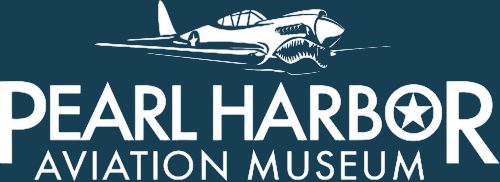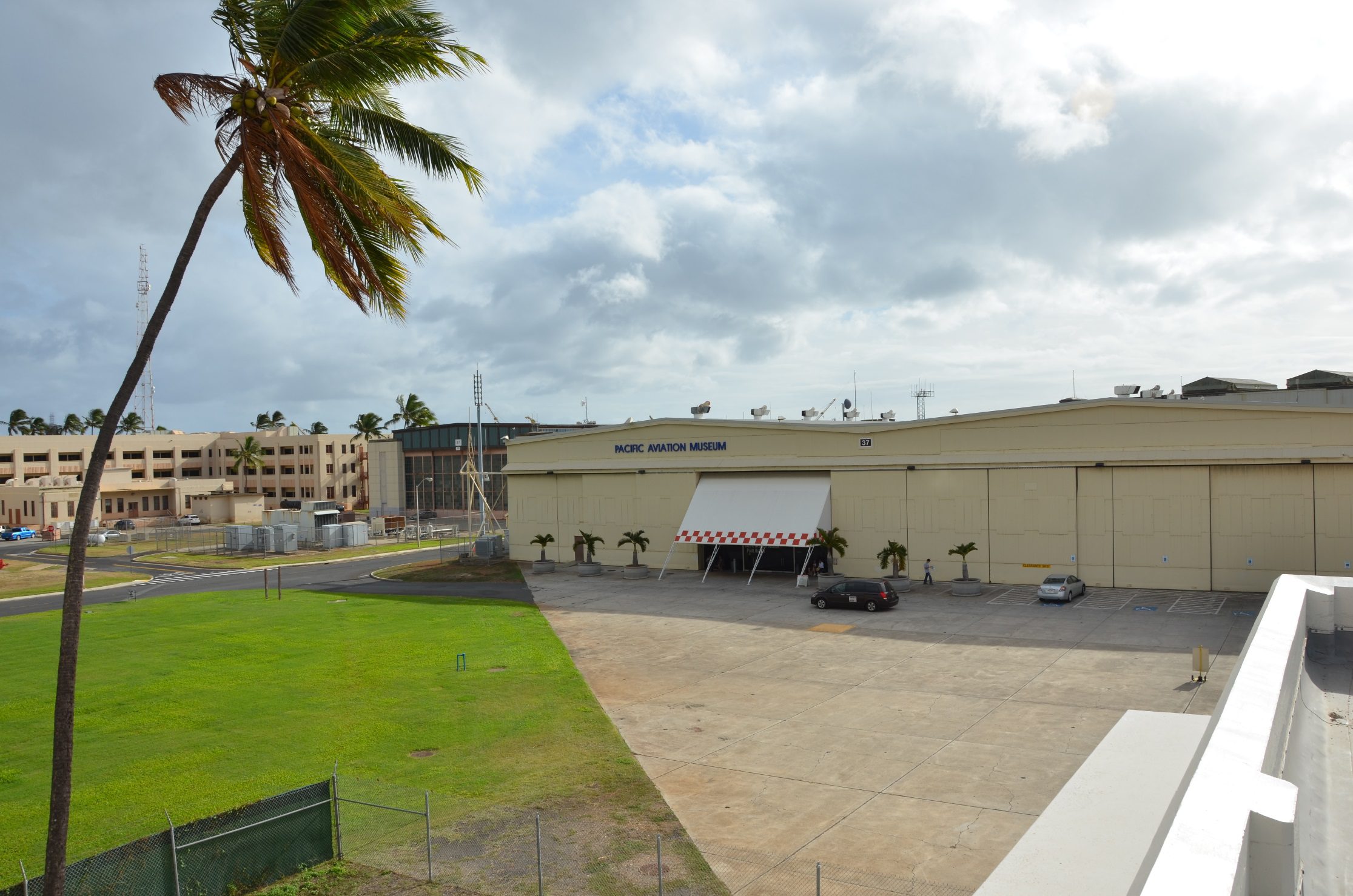Posted on April 21, 2014
By Ray Panko | [email protected] | Pearl Harbor Aviation Museum
This is the second article about the Ford Island Seaplane Base, which was the first Japanese target on Dec. 7, 1941. The first article gave an overview of the base and Ford Island. In this article, we will look at Hangar 37 and its role during the Japanese attack.
Key Points
- Hangar 37 is the entry point for guests arriving at Pearl Harbor Aviation Museum.
- At the time of the attack, it was home to the VJ-1 utility squadron, which had nine Grumman J2F “Ducks” and nine Sikorsky JRS-1s.
- During the attack, VJ-1 squadron members mounted machine guns in the back seats of their J2Fs and returned fire.
- After the base’s main radio was knocked out, Hangar 37’s radio operated as the base’s radio during the attack.
- Five JRS-1s flew out to find the Japanese fleet. They were unarmed except for a few Marines with Springfield rifles in the passenger compartment. The five pilots and one Marine received the Silver Star for their courageous efforts.
- The JRS-1 used the radial engine in the hangar’s engine exhibit. This is a Pratt & Whitney R-1690 Hornet.
- After the attack, survivors from USS California lived in Hangar 37.
- Before the museum received the hangar, it was a gymnasium.
Introduction
Today, Hangar 37 is the entry point for visitors to Pearl Harbor Aviation Museum. On the day of the attack, it was a very different place: it was the hangar for utility squadron VJ-1. During the attack, it fired back at the Japanese from machine guns in the back seats of its J2F-1 “Duck” amphibious biplanes. It also serviced SBD dive bombers so that the two-seat Douglas’ could fly out to find the Japanese fleet. It also sent out five of its own JRS-1 aircraft armed only with a few Marines carrying rifles. One JRS-1 nearly found the Japanese fleet, a discovery that would have led to the death of everyone on the aircraft.
Figure 1: Hangar 37 on Dec. 7, 1941
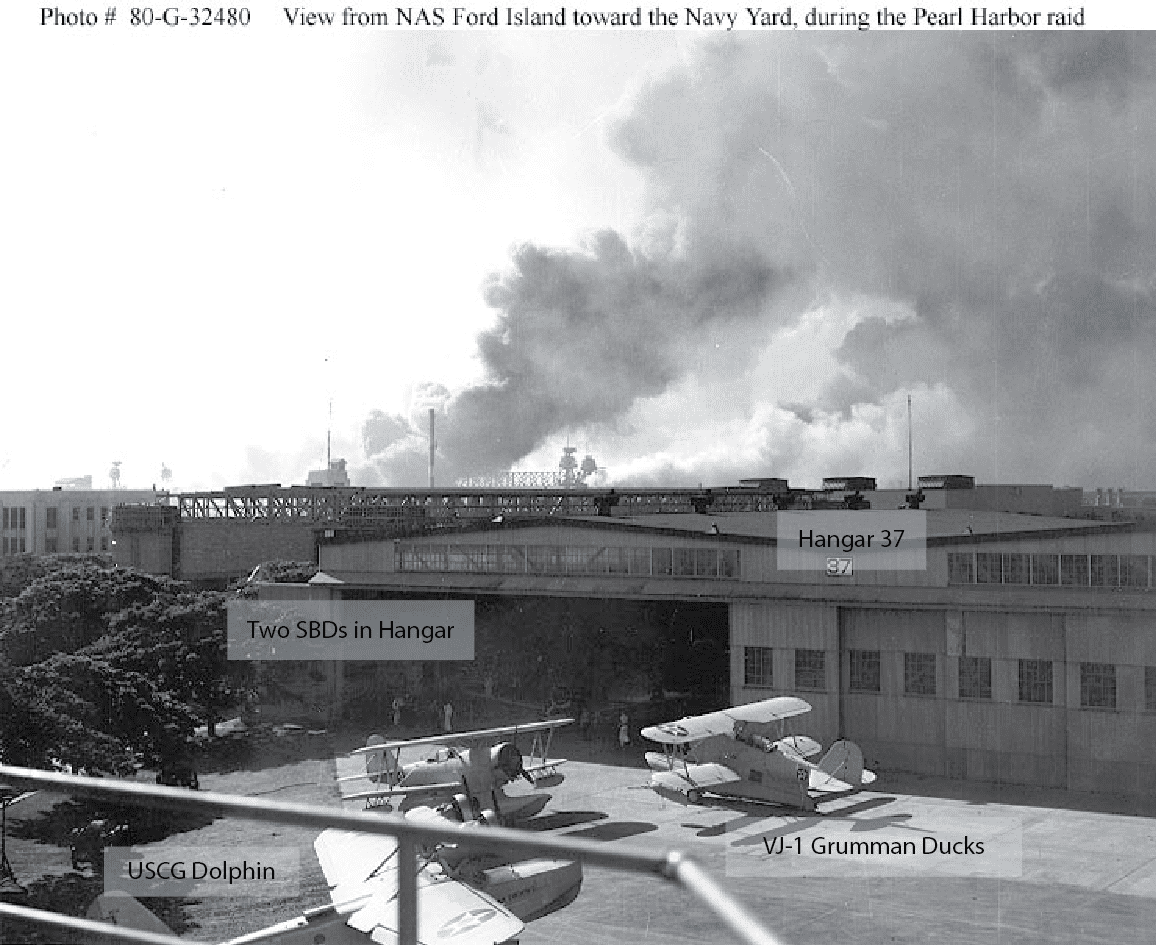
View from atop the control tower at Ford Island Naval Air Station, looking over Hanger 37 toward the Navy yard, during the Japanese air raid. In the left distance are the mast tops of USS Pennsylvania (BB-38), in Navy yard Drydock 1. Mast tops in center are those of USS Nevada (BB-36). Smoke is from Nevada and the burning destroyers Cassin (DD-372), Downes (DD-375), and Shaw (DD-373). In the foreground are two Grumman J2F amphibious biplanes and one Douglas RD-3. Two SBDs are inside Hangar 37. Source: NARA 80-G-32480.
VJ-1
Utility squadrons did all the unglamorous flying chores on naval air bases. They towed targets for fighters to shoot at, did aerial photography, served as a taxi service for people and parcels, and did whatever else was needed. Utility squadron designations began with “VJ.” “J” meant utility, while “V” meant that the squadron flew heavier-than-air aircraft (a holdover from recent blimp days). Many of the men who worked with it joked disparagingly that “VJ” stood for “various junk.” In late 1941, Hawaii had three VJ squadrons. VJ-1’s home was Hangar 37. It had 18 aircraft.
Grumman J2F Ducks
Nine of the 18 aircraft in squadron VJ-1 were Grumman J2F-1 “Ducks.” The two aircraft in the middle of Figure 1 are Ducks. Because of its large, distinctive float, the Duck also was referred to as the “Flying Shoehorn.” Although it had seats for both a pilot and rear gunner, the gunner’s station was vacant in peacetime, except when it carried an observer or photographer. Between the upper cockpit and float was a spacious compartment that could carry two people or supplies. J2Fs might look familiar to people who remember the television series The Black Sheep Squadron(originally titled Baa Baa Black Sheep). Ducks sometimes brought visitors and supplies to VMF-214’s base on fictional “Vella La Cava” island.[1]
Sikorsky JRS-1s
VJ-1 also had nine Sikorsky JRS-1s, which were military versions of the Sikorsky S-43. S-43s were called “Baby Clippers” because they looked like smaller versions of the four-engine S-43 Clippers that pioneered Pacific routes for Pan Am in the mid-1930s. S-43s were flown in Hawaii by Inter-Island Airways, which later became Hawaiian Airlines.
Figure 3: Sikorsky S-43
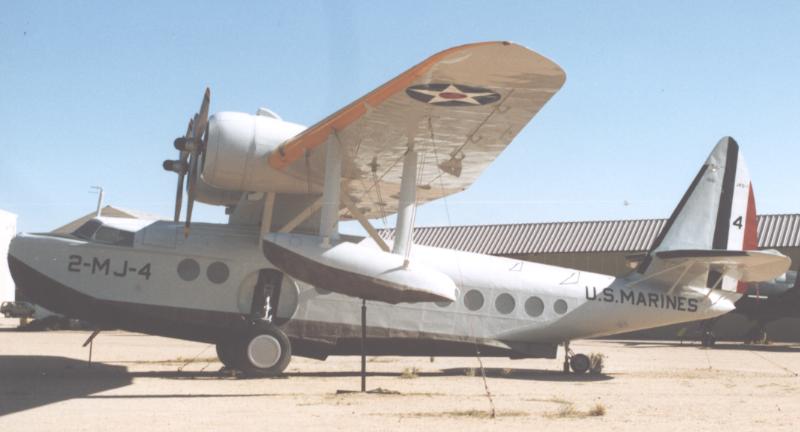
A Sikorsky S-43 at Pima Air & Space Museum, Tucson, AZ., is painted to represent a U.S. Marine Corps JRS-1 of VMJ-2 squadron. Photo by RuthAS via Wikipedia. (http://en.wikipedia.org/wiki/File:Sikorsky_S-43_(JRS-1)_Pima_10.05R.jpg).
JRS-1s were powered by two nine-cylinder Pratt & Whitney R-1690 “Hornet” engines. If this sounds familiar, that’s because the radial engine in Hangar 37’s engine display is an R-1690. The Hornets used in JRS-1s were R-1690-52 engines rated at 750 hp. The bigger S-42 Clippers used four of these power plants.
Figure 4: Pratt & Whitney R-1690 Hornet Engine at Pearl Harbor Aviation Museum
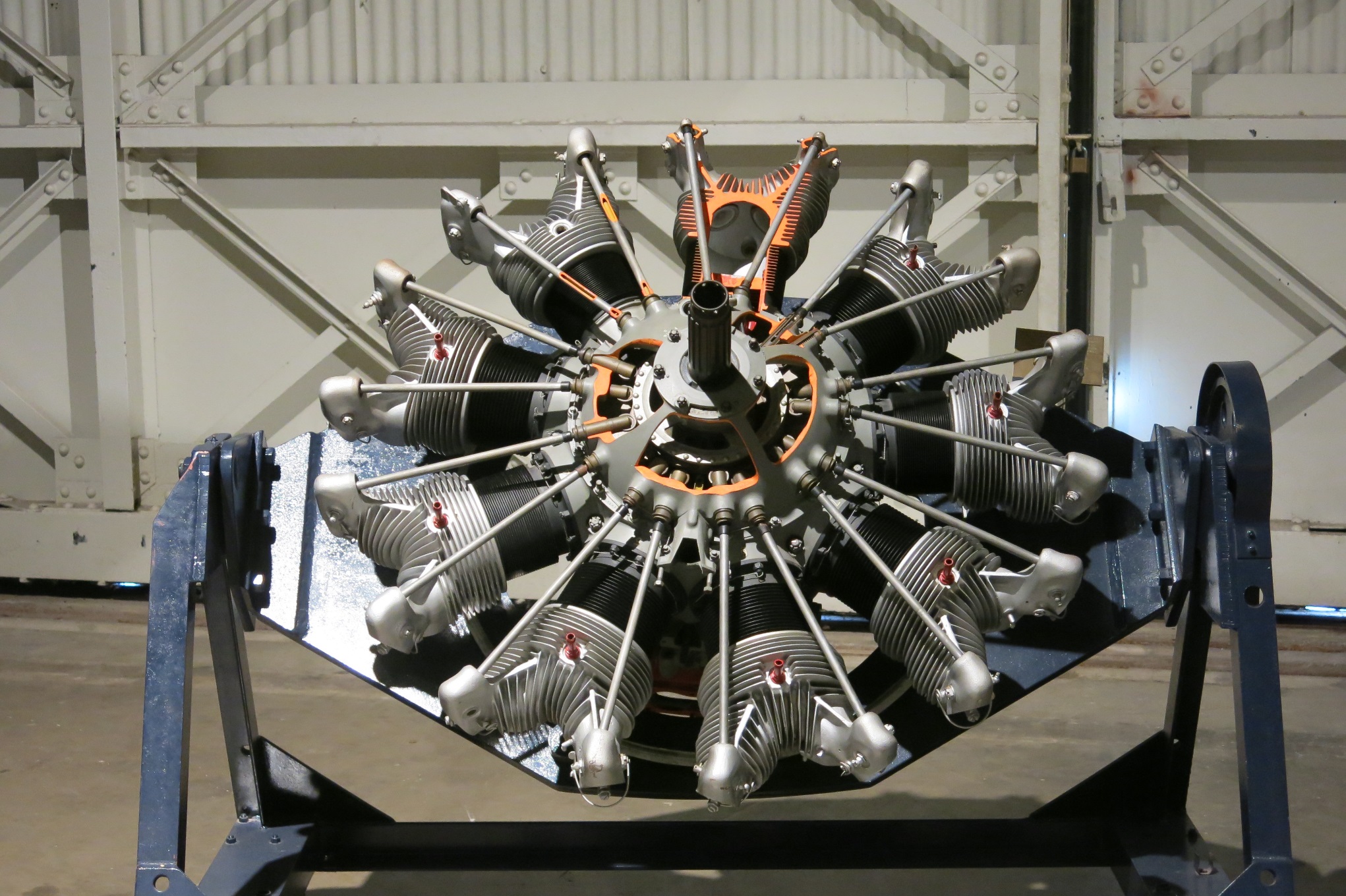
Source: Ray Panko / [email protected]
JRS-1s were faster than the Ducks, so they could tow targets at speeds needed by the newer fighters. With the ability to carry 19 passengers and sometimes a few more, they also greatly expanded the squadron’s taxi role. VJ-1 had the lion’s share of the Navy’s 17 JRS-1s.
Table 1 compares the JRS with the Navy’s PBY Catalina flying boats. The PBY was a dedicated patrol plane with a long range and considerable defensive armament. Ford Island’s four PBY squadrons were based in Hangars 6 and 54. At the beginning of the attack, Japanese dive bombers hit the ramps outside both hangars, knocking nearly all PBYs out of commission. With its reconnaissance capability crippled, the Navy asked volunteers to find the Japanese fleet using JRS-1s. (Although smaller than the PBY, they still had a range of 775 miles). This was about enough to find the retreating Japanese fleet if an aircraft flew out in the right direction. JRS-1s were even faster than PBYs in cruise, and — unlike most PBYs at that time — they were amphibious, so they could launch immediately instead of having to be moved laboriously to the water.
Their obvious drawback was that they had no defensive armament. Although each JRS-1 was given a few Marines with Springfield rifles, finding the Japanese fleet would be fatal.
Table 1: Comparison of JRS and PBY Catalina
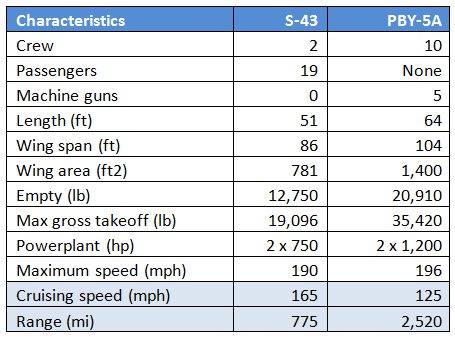
Source: Wikipedia, Sikorsky S-43 and PBY Catalina.
VJ-1 During the Attack
When the attack began, VJ-1’s officers and enlisted men swung into action. They moved the Ducks around the hangar, quickly installed machine guns in the rear seats, and began to fire back at the Japanese. Enlisted sailor Harry Mead stayed at his radio post in Hangar 37 despite being told to move to safety. After the Japanese attack knocked out the base’s main radio, Hangar 37’s became the base’s radio station.
When Enterprise SBDs arrived shortly after the attack started, at least two were wheeled into Hangar 37. They were serviced, then flew out again to try to locate the Japanese fleet.
During the attack, sailors from USS California began to approach the hangar area. They were in shock, milling around outside while Japanese aircraft strafed the area. Sailors from Hangar 37 led survivors into the Operations Building, where they laid the oil-soaked sailors on the uncompleted cement floor and tried to get some of the oil off of them. (After the attack, California sailors bunked in Hangar 37 until better accommodations were found.)
At 9:50, the first of five JRS-1s — manned by volunteer pilots and crewmembers — took to the air to look for the Japanese fleet. All five pilots would receive the Navy Cross.
Lieutenant (JG) Wesley Ruth was the squadron’s executive officer. He piloted his Sikorsky straight north — the correct direction to find the Kido Butai, Japan’s primary air carrier group. Just after he left Oahu, a single-engine aircraft appeared on Ruth’s tail. He dove for the water’s surface, and his two Marines with their Springfield rifles poked their barrels out the windows. The aircraft flew off, and Ruth and his copilot, Emory “Pappy” Geise, continued north. They probably flew the aircraft within 50 miles of the Japanese fleet before low fuel forced them to turn back.
One Marine in a JRS-1 received the Navy Cross for his actions. Sgt. Thomas Hailey served on USS Oklahoma. When Oklahoma was abandoned, Hailey jumped in the water wearing only his skivvies. He helped his shipmates out of the oily water onto USS West Virginia and then manned an anti-aircraft gun. Later, he went to Ford Island, grabbed a rifle, and climbed into one of the Sikorksys. Eleven others aboard the Sikorksys received commendations.
The Hangar at Pearl Harbor
Hangar 37 was built in 1926, near the seaplane ramp. It was built next to the Navy’s first hangar on Ford Island, Hangar 6, which was heavily damaged in the Japanese attack. Hangar 37 was rather small, with a capacity of only 42,000 square feet.
Figure 5: Hangar 37 in its original location
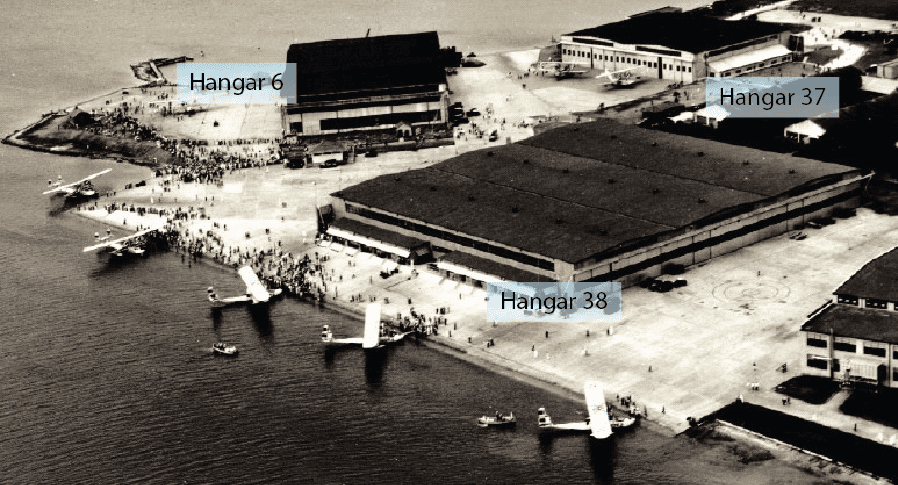

Source: U.S. Navy, 1945.
Because Hangar 37 was too small for the needs of the big flying boats that began to take over the southern tip of the island, the Navy dismantled it and moved it to its current location. This happened sometime between 1936 and 1940.
Figure 6: Hangar 37 in its final location
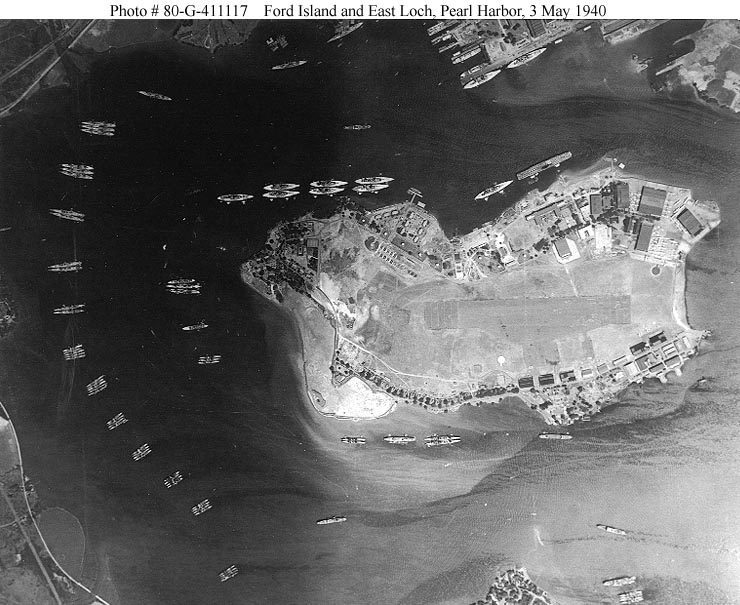
Source: NARA, May 3, 1940
Even during the war, the Navy realized that Ford Island was too small for its air needs. It began moving facilities to Barbers Point Naval Air Station. Eventually, Ford Island became an auxiliary airfield for NAS Barbers Point. In 1962, Ford Island ceased to be a Navy flying facility. Most seaplane hangars on the island became storage facilities. Hangar 37, however, was just the right size to become a gymnasium. In 1993, the Navy turned it into a gym with a full basketball court. When Pearl Harbor Aviation Museum took over the building, the wooden floor of the court was still in place.
Figure 7: Hangar 37 Basketball Court
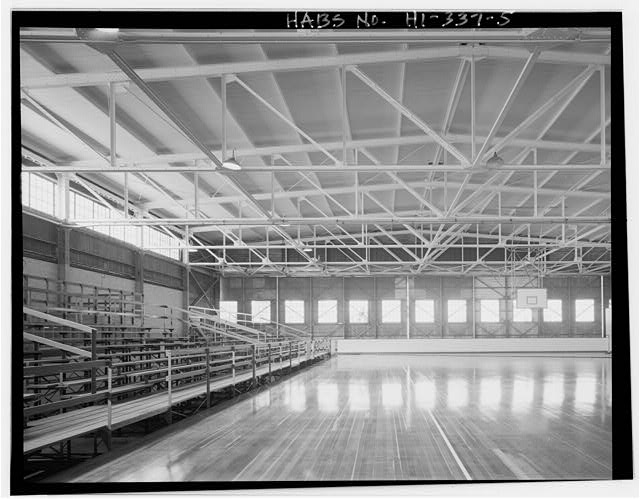
Source: Historical American Buildings Survey, undated.
